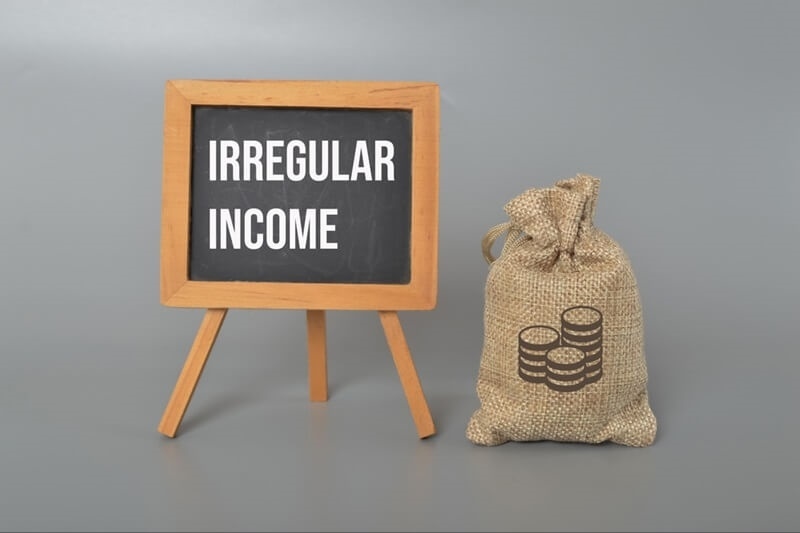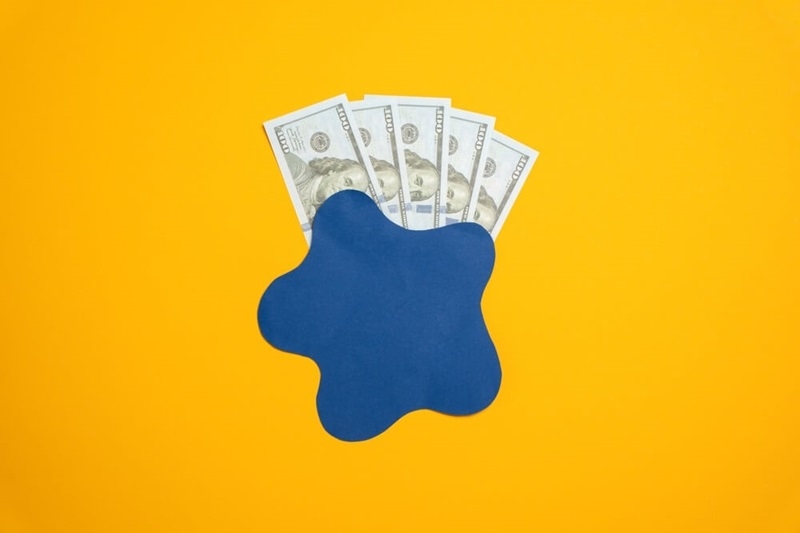
Managing money is challenging when your checks are not consistent. If you are a freelancer, contractor, gig economy participant, or side hustler, you've probably endured the stress of not knowing exactly how much you'll bring home each month. There will be some months with more coming in than you expect, and others that are ruthlessly meager. That's where it's crucial for financial stability to understand how to manage irregular income.
In this comprehensive guide, we'll explore practical solutions that break budgeting with irregular income into bite-sized pieces. We'll cover everything from budgeting with freelance income and side hustle paycheck planning to savvy gig worker money tips that will prepare you to ride out the highs and lows with confidence.
Unlike the consistent regular salaries of traditional employees, freelancers, consultants, gig workers, and small businessmen are uncertain about their lives. There may be projects that are prominent in one month and lean months in another. Irregular income makes it difficult to plan for bills, savings, and long-term goals.
The problem isn't how much you earn—it's when. Rent, utilities, and food bills arrive every month, no matter if you've hit a client's payday. Without planning, this conflict leads to stress, debt, or dipping into savings.

That's why learning how to manage irregular income is all about creating systems that smooth out the highs and lows, so your lifestyle and dreams aren't held captive by unpredictable paydays.
Step one of variable income budgeting is knowing your baseline. Look at what you earned in the past 12 months. Add them up and divide by 12 for your average monthly income. If you do not have a year's records, use the past 6 months as a metric.
For example:
Month 1: $4,200
Month 2: $3,100
Month 3: $5,000
Month 4: $2,800
Month 5: $3,600
Month 6: $4,400
Total = $23,100 ÷ 6 = $3,850 average monthly income
This average is your budgeting point of departure based on freelance income. It gives you a realistic figure of what you can reasonably afford each month and smooths out the highs and lows.
Where your income is not regular, fixed costs like rent, utilities, insurance, and food should take precedence. All "must-pay" bills should be written down and totaled.
Rent/Mortgage: $1,200
Utilities: $250
Health Insurance: $400
Groceries: $500
Transportation: $300
Total Essential Expenses = $2,650
If your average monthly pay is $3,850, then you can see that your essentials are met with leeway to save, settle debt, and meet lifestyle costs. This is critical in side hustle paycheck planning because it ensures your needs are never at risk.
A bare-bones budget is your emergency fallback plan. It includes only the non-negotiables—housing, food, utilities, and insurance. In lean months, you’ll cut back on non-essential spending like dining out, streaming services, or shopping.
For instance, if your needs are $2,650, your thrifty budget can be $2,200 if you cut back on expenses, cook at home, and put discretionary spending on hold. Having it written down in advance makes budgeting from variable income easier since you'll know precisely what to tighten your belt on if your income drops.
One of the smartest money tips for freelancers is to mimic a consistent paycheck. Here's how:
This plan keeps you from entering the feast-or-famine syndrome. Let's say you have a medium monthly income of $3,850. You can have a "salary" of $3,500. Excess in high-income months is placed in savings. During lean months, you tap on the excess to maintain consistency.
Either freelancing or having some side hustles, mixing business and personal money creates a mess. Open a different business account for business income and business expenses like software, marketing, or subscriptions. Pay yourself out of it, as if you're employing yourself. This separation doesn't just manage taxes; it also allows side hustle paycheck planning and long-term growth.
Your safety net is an emergency fund, and it's even more important if your income isn't stable. Save at least 3–6 months of living costs. If your necessities cost $2,650/month, your goal would be $8,000–$16,000.
Begin small: even saving $50–$100 from each payment adds up. Regular savings in "feast" months will make it less painful to weather the "famine" ones without resorting to credit cards. This is one of the greatest gig worker money tips because it is freedom and peace of mind.
Unlike W-2 employees, freelancers and gig workers don't have taxes withheld. That means you will be responsible for planning ahead for quarterly estimated taxes. One piece of advice: save 25–30% of every payment in a special tax savings account.
Nothing hurts more than being left with no choice but not to pay your tax bill because you weren't ready. Make tax savings an unbendable expense in your variable income budgeting.
Diversifying streams of income is among the best freelance money advice. Being reliant on one client or platform is a risky venture. Consider:
By taking this approach, not only will your average revenue rise, but also the uncertainty anxiety will be reduced. Side hustle paycheck budgeting becomes easier when money flows in from multiple sources.
Budgeting programs like YNAB (You Need a Budget), Mint, or EveryDollar are ideal for gig workers and freelancers. They enable you to assign a job to every dollar, track income fluctuations, and not spend more in months when you're making more. Tracking is not about restraint—it's about taking control. With irregular income, knowing where your money goes is half the battle. This is important when learning to manage irregular income effectively.
Since you are self-employed, there's no employer-matched 401(k) or sponsored health insurance. So you must be more responsible for your future. Options are:
Solo 401(k): Great for well-paid freelancers.
SEP IRA: A simple option for retirement savings as a self-employed individual.
Health Savings Account (HSA): If you have a high-deductible medical plan.
Retirement savings may seem like a fantasy when your paychecks are unpredictable, but even small sums are better. Insuring yourself in case of illness and disability is another smart gig worker money hack.
Automation removes the temptation to skip bill payments or savings. You can:
This brings freelancing income budgeting less under willpower and more under systems.
Unpredictable income calls for adaptability. Check your budget every month and rebalance based on earnings. In high-earning months, put additional funds toward debt, savings, or planned investments. In lean months, drop to your skeleton budget. Use it as a pattern of expansion and contraction. The secret is remaining proactive, not reactive, which is the key to effectively managing sporadic income.
It doesn't happen overnight. There is planning and discipline involved, and an occasional bit of trial and error. But once you build systems—like paying yourself a consistent salary, keeping money separate, and having an emergency fund—you will have stability in the unpredictable world of freelancing, gig work, or side hustles.
If you're budgeting on the cheap as a freelancer, researching gig worker money tips, or paycheck planning side hustling, the principles apply: save first, budget for skinny months, and never lose sight of long-term goals.
Financial independence isn't something that can be earned by having a regular paycheck—it's something that can be achieved by making steadily what paycheck you do have. With clever variable income budgeting, even a variable income can bring steady peace of mind.
This content was created by AI